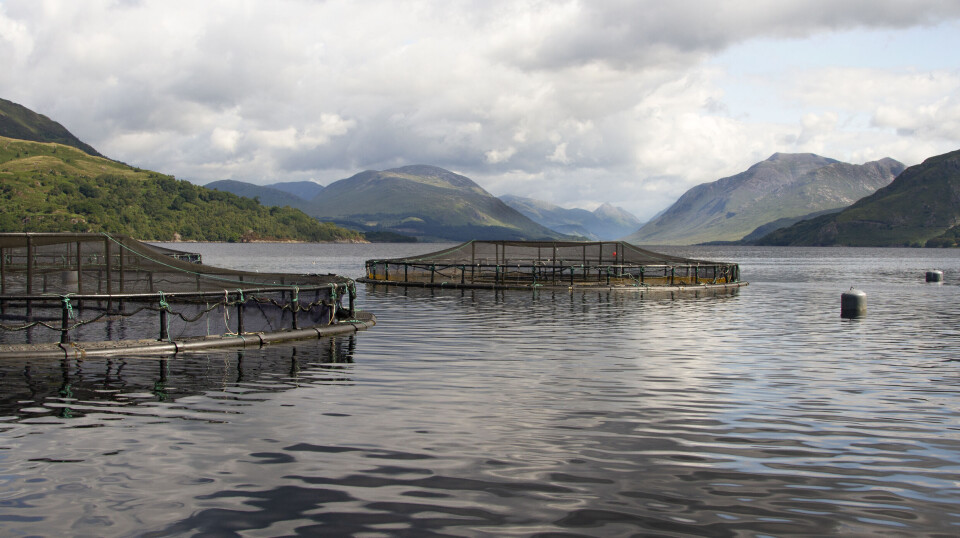
Mowi to consult community about Loch Etive farm changes
Salmon farmer Mowi Scotland will hold a community engagement event at Taynuilt Village Hall tomorrow to inform locals about its plans to grow large post-smolts at two sites in Loch Etive that have been used by its subsidiary, Dawnfresh Farming Ltd, to grow rainbow trout. A second engagement event will be held at the Ardchattan Centre, on the other side of the loch, next Monday.
As part of its plans to grow post-smolts to around 750 grams, Mowi wants to replace existing pens with fewer, larger pens at both sites.
It has submitted screening requests to Argyll and Bute Council for Sailean Ruadh (Etive 6), west of Airds Point, and Airds Bay (Etive 4), east of Airds Point.
120m pens
Mowi plans to replace the 10 x 80-metre circumference pens at Sailean Ruadh and the 12 x 80m pens at Airds Bay (of which 10 are currently installed in a 50m grid) with 6 x 120m pens at each site.
An existing feed barge at Sailean Ruadh would be replaced by a specially modified low-profile barge, and a low-profile barge and a tidal barrier would be installed at Airds Bay.
Mowi/Dawnfresh said in a social media post that it wants to present the community with options relating to infrastructure changes at the sites.
Significant improvement
“Following the collection of environmental data and a thorough review of current farming practices in the loch, we believe the proposed changes are a significant improvement to existing operations,” stated Mowi.
Both events are open for people to drop in between 6pm until 8pm, with a presentation at 7pm.
“We will be available to answer any questions and welcome feedback on these proposals from the community,” said Mowi in its post.

Four sites
In a change-of-use application submitted to Argyll and Bute planners last year, Mowi explained that it planned a switch to raising Atlantic salmon post-smolts instead of harvest-size rainbow trout on four Dawnfresh fish farms in Loch Etive after acquiring the company in February. Sailean Ruadh (1,500 tonnes) and Aird Point (1,545t) have the largest biomass allowances. The other two sites – Inverawe and Port na Mine – are situated further east and have biomass allowances of 250t and 458t respectively.
Mowi’s change-of-use application included a 31-page report about mathematical modelling that showed the switch will substantially lower lice numbers on the farms and reduce risk to local wild salmon populations.
More fallowing
The changeover to post-smolts entails fallowing the sites for three weeks every six months instead of every two years and will reduce or obviate the need for medicinal lice treatments.
All four sites will be fallowed at the same time, instead of separately as in the past. This will increase the effectiveness of the fallow period in reducing lice numbers.
The 18-mile-long Loch Etive has lower salinity than other sea lochs because of a high sill at the entrance and a large freshwater catchment, and this is also expected to keep lice levels low because the parasites do not favour brackish water.























































